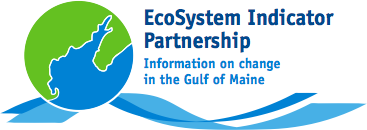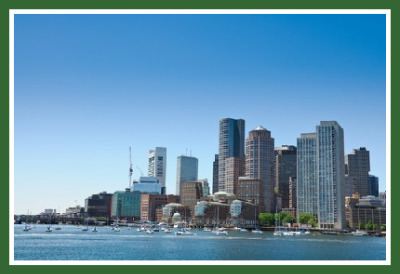Historical Development
Humans have been an integral part of the Gulf of Maine since the earliest native settlers in the region. The initial influx of people to the Gulf of Maine began approximately 12,000 years ago. It is only in the last 500 years, however, that the region has witnessed extensive coastal settlement and development. European settlers were first drawn to the Gulf's shores in search of fortune, religious freedom or a new life. Settlements grew up near natural salt and fresh water marshes. In the upper reaches of the Bay of Fundy, a vast network of dykes was constructed to convert tidal salt marshes into farmland. Cod was plentiful and well-suited to salt curing, which was essential for the long shelf-life necessary for export. Salt, hay and cod were the first steps in a maritime enterprise that would bring the region two centuries of prosperity. By the 1730s, shipbuilding in the Gulf grew up to support the salt cod trade with Europe. Spurred on by the Industrial Revolution that was taking hold in Great Britain, entrepreneurs in the Gulf began to develop an industrial base of their own in the late 1790s. New England inventors and entrepreneurs transformed old mercantile cities into manufacturing centers. Fuelled by industrialization of its shores, after 1880, farms declined in size and the number and size of urban areas expanded. By 1940, two-thirds of the population lived in coastal counties of the Gulf in a limited number of urban centres. People continued to migrate from rural to urban areas, following employment opportunities and services. Modern Day
Major trends for the Gulf of Maine region are urbanization (the migration from rural to urban centres) and urban sprawl (low-density development of suburbs). Growth projections for the coast of Maine categorise nearly all of it as "suburban" by year 2050. Coastal areas, with prime recreational opportunities and waterfront lands, are becoming increasingly popular settings for retired and seasonal residences. Seasonal dwellings along the coast now represent almost one third of the housing stock in some areas. A summary of coastal development in the Gulf of Maine and it effect on the environment is provided in Tides of Change Across the Gulf (Pesch and Wells 2004). Coastal Development Theme Paper
One theme paper has been identified that will be developed for the State of the Gulf of Maine Report, and will be available in 2011:
[ Back to Top of Page ] |

 
|
|||||||||||||||||

 As of 2007, nearly 10.8 million people live within the Gulf of Maine region and the yearly population growth in the area was just over 1%. This population trend and the migration of human settlement toward the coast will continue to impact the Gulf of Maine ecosystem for decades to come. By 2025, the population of the Gulf is expected to increase by approximately 0.6 million people.
As of 2007, nearly 10.8 million people live within the Gulf of Maine region and the yearly population growth in the area was just over 1%. This population trend and the migration of human settlement toward the coast will continue to impact the Gulf of Maine ecosystem for decades to come. By 2025, the population of the Gulf is expected to increase by approximately 0.6 million people. Click for RSS feed
Click for RSS feed